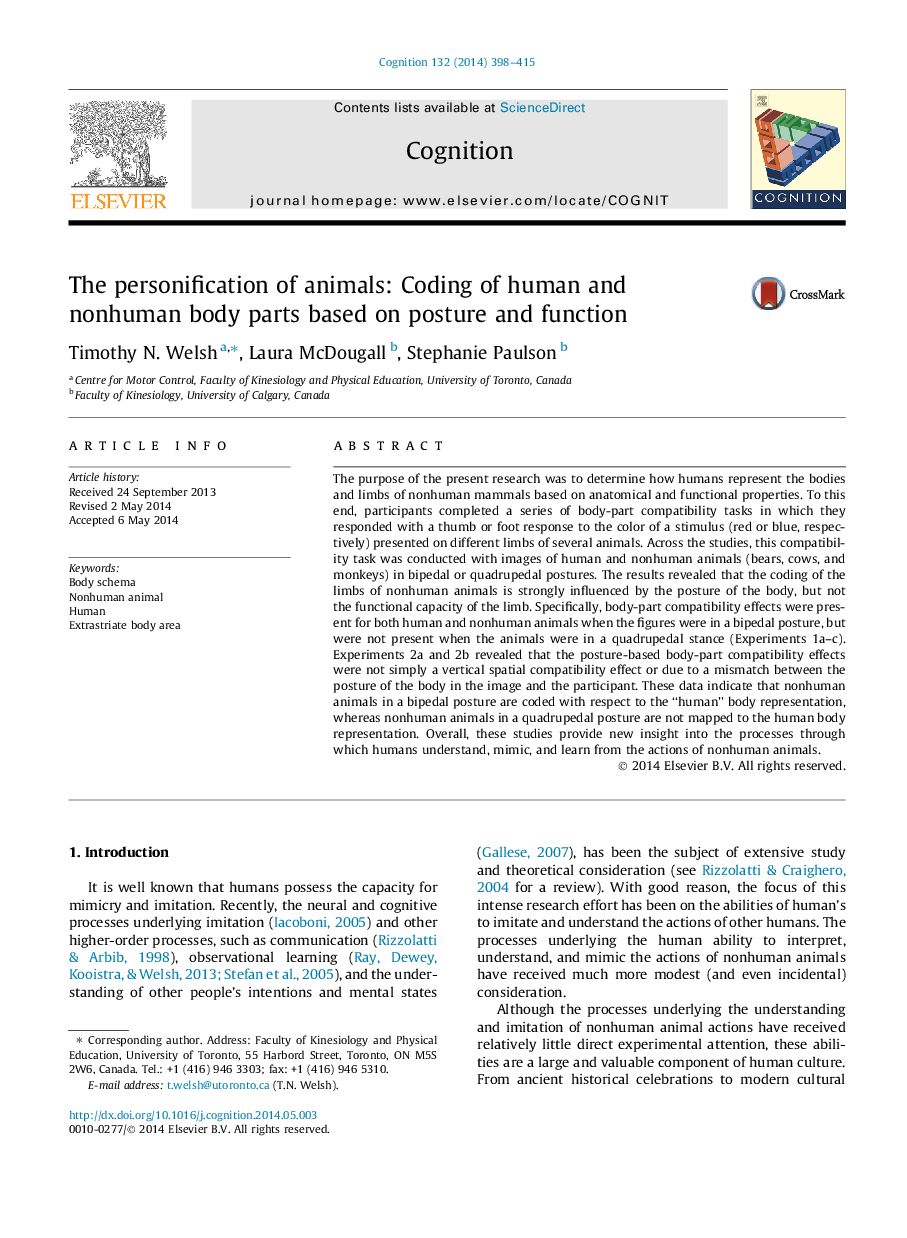| کد مقاله | کد نشریه | سال انتشار | مقاله انگلیسی | نسخه تمام متن |
|---|---|---|---|---|
| 10457532 | 921842 | 2014 | 18 صفحه PDF | دانلود رایگان |
عنوان انگلیسی مقاله ISI
The personification of animals: Coding of human and nonhuman body parts based on posture and function
ترجمه فارسی عنوان
شخصی سازی حیوانات: رمزگذاری قسمت های بدن انسان و غیر انسان بر اساس موقعیت و عملکرد
دانلود مقاله + سفارش ترجمه
دانلود مقاله ISI انگلیسی
رایگان برای ایرانیان
موضوعات مرتبط
علوم زیستی و بیوفناوری
علم عصب شناسی
علوم اعصاب شناختی
چکیده انگلیسی
The purpose of the present research was to determine how humans represent the bodies and limbs of nonhuman mammals based on anatomical and functional properties. To this end, participants completed a series of body-part compatibility tasks in which they responded with a thumb or foot response to the color of a stimulus (red or blue, respectively) presented on different limbs of several animals. Across the studies, this compatibility task was conducted with images of human and nonhuman animals (bears, cows, and monkeys) in bipedal or quadrupedal postures. The results revealed that the coding of the limbs of nonhuman animals is strongly influenced by the posture of the body, but not the functional capacity of the limb. Specifically, body-part compatibility effects were present for both human and nonhuman animals when the figures were in a bipedal posture, but were not present when the animals were in a quadrupedal stance (Experiments 1a-c). Experiments 2a and 2b revealed that the posture-based body-part compatibility effects were not simply a vertical spatial compatibility effect or due to a mismatch between the posture of the body in the image and the participant. These data indicate that nonhuman animals in a bipedal posture are coded with respect to the “human” body representation, whereas nonhuman animals in a quadrupedal posture are not mapped to the human body representation. Overall, these studies provide new insight into the processes through which humans understand, mimic, and learn from the actions of nonhuman animals.
ناشر
Database: Elsevier - ScienceDirect (ساینس دایرکت)
Journal: Cognition - Volume 132, Issue 3, September 2014, Pages 398-415
Journal: Cognition - Volume 132, Issue 3, September 2014, Pages 398-415
نویسندگان
Timothy N. Welsh, Laura McDougall, Stephanie Paulson,
